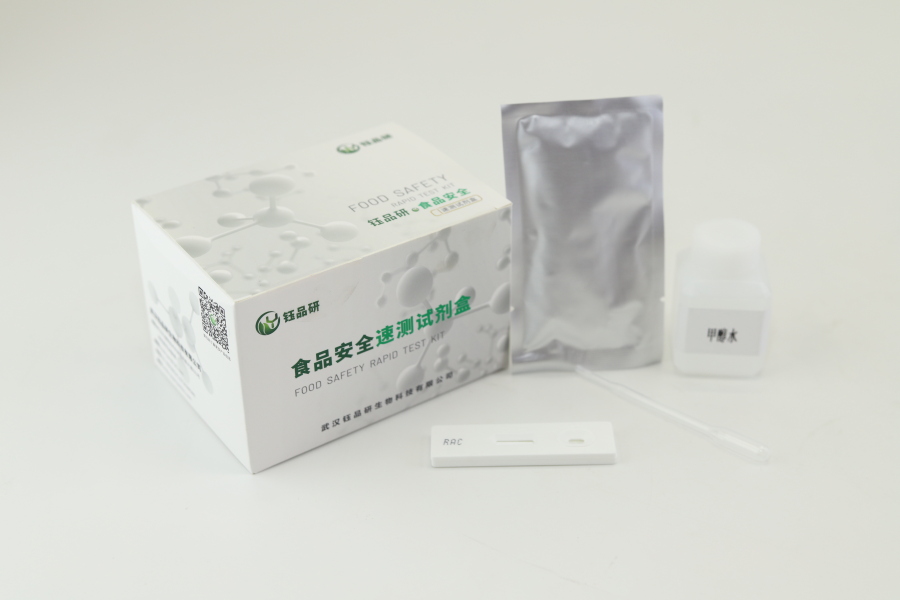
food safety is a major issue related to the national economy and people's livelihood. As the first line of defense to ensure food safety, rapid detection technology is playing an increasingly important role in food quality monitoring due to its high efficiency and convenience. This article will focus on the rapid detection technology of two common pollutants, namely quinolone residue rapid detection and clenbuterol rapid detection method, aiming to provide reference for relevant practitioners and people who are concerned about food safety.
Quinolones are a class of synthetic broad-spectrum antimicrobials, which are commonly used in livestock, poultry and aquaculture to prevent and treat bacterial infections. However, if it is not standardized or abused, it will lead to its residue in animal-derived foods, and long-term intake may cause potential harm to human health, such as affecting bone development and developing drug resistance. Therefore, rapid detection of quinolone residues in animal-derived foods is essential to detect problems in time and prevent substandard foods from entering the market. At present, rapid detection methods for quinolones are mainly based on immunological principles, such as colloidal gold immunochromatography. This method is easy to operate, does not require complex equipment, and has a short detection time. Results can usually be obtained within 10-15 minutes, making it ideal for on-site rapid screening. Detection samples generally include meat, aquatic products, eggs, milk, etc. During testing, the sample is processed with a specific extract and then added dropwise to the detection card, and the result is judged according to the color rendering of the detection line and the quality control line. Wuhan Yupinyan Biological's quinolone rapid detection reagent is based on such principles, providing efficient and convenient data support for food manufacturers and regulatory authorities.
"clenbuterol" does not refer to a specific substance, but a class of drugs that can promote the growth of lean meat and inhibit fat deposition, such as clenbuterol, salbutamol, ractopamine etcetera. Illegal use of clenbuterol will cause drug residues in animals to exceed the standard, and humans may experience symptoms of poisoning such as heart palpitations, dizziness, and muscle tremors after eating, which seriously endanger human health. For the rapid detection of clenbuterol, immunochromatography is also the mainstream, including colloidal gold method and enzyme-linked immunosorbent assay (ELISA). The colloidal gold test strip for the detection of clenbuterol has the advantages of fast, intuitive and easy operation, and can be preliminarily screened on the spot for urine samples and tissue samples. The basic principle is to use the specific binding reaction of antigens and antibodies to determine whether the sample contains clenbuterol and its approximate content through the color change on the test strip. The ELISA method has higher sensitivity and quantitative or semi-quantitative analysis ability, which is suitable for the detection of batch samples in the laboratory, but it takes a little longer than the colloidal gold method. Wuhan Yupinyan Bio also provides a variety of rapid detection solutions for different types of clenbuterol, helping to control drug safety in animal breeding from the source.
To sum up, the rapid detection technology of quinolones and clenbuterol is an indispensable part of the food safety system. They can conduct preliminary screening of suspicious samples in a short time, which greatly improves the efficiency of supervision and reduces food safety risks. Wuhan Yupinyan Bio, as a professional food safety rapid detection reagent manufacturer, has always been committed to providing high-quality and high-sensitivity rapid detection products for the market, and contributing to the protection of the public's "safety on the tip of the tongue". In the future, with the continuous advancement of technology, rapid detection methods will develop in the direction of higher sensitivity, higher specificity, more portability and intelligence, providing stronger technical support for food safety supervision. At the same time, it also calls on relevant enterprises to strictly abide by laws and regulations, operate in good faith, and jointly create a safe and secure food environment.

